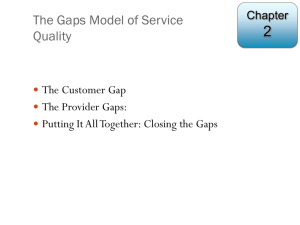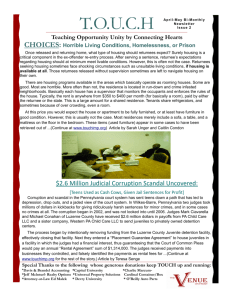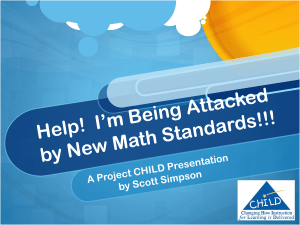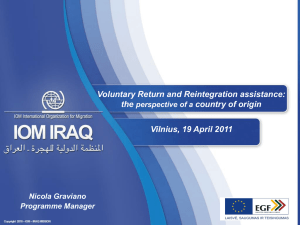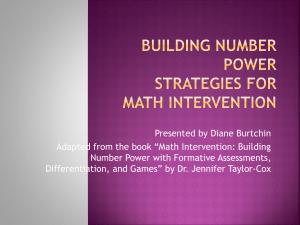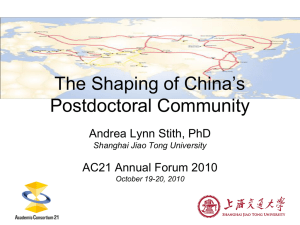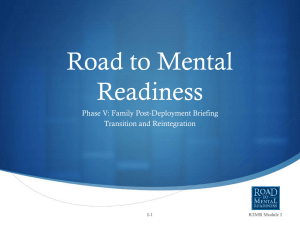file
advertisement
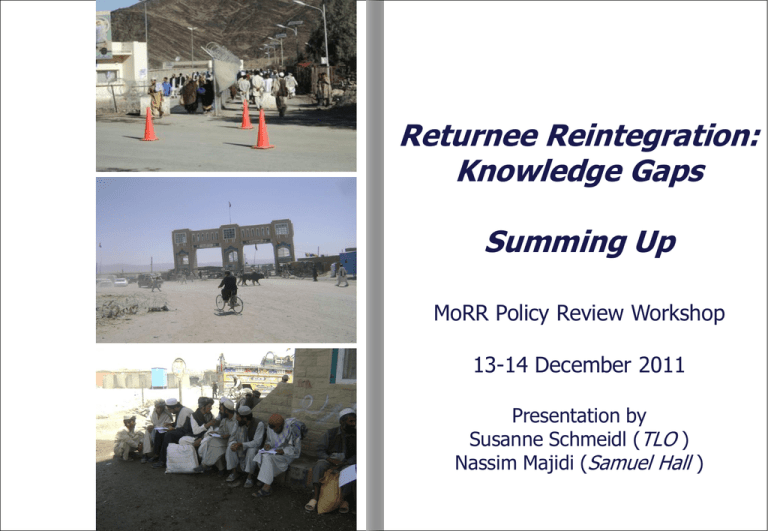
Returnee Reintegration: Knowledge Gaps Summing Up MoRR Policy Review Workshop 13-14 December 2011 Presentation by Susanne Schmeidl (TLO ) Nassim Majidi (Samuel Hall ) 1 Knowledge gaps “The nature of reality is this: It is hidden, and it is hidden, and it is hidden.” – Rumi 2 KNOWLEDGE GAPS What does reintegration mean in Afghanistan today? “What people say, what people do, and what they say they do are entirely different things.” – Margaret Mead WHERE returnees really are? Returnee monitoring – rural and urban WHO returnees really are? Going beyond a policy category: timing of return WHAT has been their return experience? Changing social environments WHAT returnees are currently doing? Multiple push, pull, coping strategies HOW do they perceive their reintegration process? Subjective indicators HOW do they see their future? What are the scenarios? 3 Practical Gaps / Research Needs 4 Practical Gaps and Research Needs 1. Profiling of Key Returnee Areas: Trying to Unpack Trends of Return Migration and Displacement Secondary displacement New trends of internal displacement (IDP trends) Trends of anticipatory migration patterns (Dubai, India, Europe etc.) Labour migration and mixed migration trends Migration smuggling Trafficking Unaccompanied minors in the West 5 Practical Gaps and Research Needs 2. Profiling of Underserved Key Returnee Areas Comparison of returnees vs. host populations Build on World Bank study on informal settlements in Kabul, extend to major urban areas See returnees as part of a whole How is “parity” understood and defined? An economic framework for understanding welfare parity Referring to other studies – e.g. report on reintegration in Burundi 6 Practical Gaps and Research Needs 3. Improving Understanding of Returnee-Migration Nexus Return does not (and cannot) equal staying put What are returnees’ own migration choices / coping strategies? Understanding re-integration for Kuchis: double-edged sword Forcing them to stay put , or Forcing to resume nomadic lifestyle? Understanding re-integration for other minorities: stateless people, e.g. Jogi communities 7 Practical Gaps and Research Needs 4. Behind Protection: Core Protection Priorities for Afghan Returnees & IDPs What are the key protection concerns? Efforts to establish a protection monitoring system What are the protection concerns that can be assessed and that can be followed-up on concretely? How can response to protection issues be organized and coordinated? 8 Practical Gaps and Research Needs 5. Land and reintegration: Taking stock Proper assessment about LAS Feasibility of return to certain areas (e.g. Pashtuns in the North) Revising current LAS policy for areas of origin only Overall understanding of recent land-grabbing, tenure security etc. 9 Practical Gaps and Research Needs 6. Adequate Assessment of National Programs NSP, NABDP, NSDP etc. How are they (indirectly) facilitating sustainable return and reintegration? How are they contributing? How could they contribute? How to work through them or possibly reform them to perform better? Cooperation of Afghan Ministries (MoRR, MRRD, MUDH etc.) 10 Methodology Gaps “If we knew what it was we were doing, it would not be called research, would it?” – Albert Einstein 11 METHODOLOGY GAPS How can we reliably portray returnee realities? Direct data gathering Dynamic – longitudinal – research Growing divide between quantitative and qualitative methods Desk Review and Peer Review 12 Contacts Nassim Majidi, Director, Samuel Hall Consulting nassim.majidi@samuelhall.org , Tel +93797978206 Susanne Schmeidl, Head Research/Peacebuilding, The Liaison Office (TLO) susanne.schmeidl@tlo-afghanistan.org, Tel +93797367435 13
